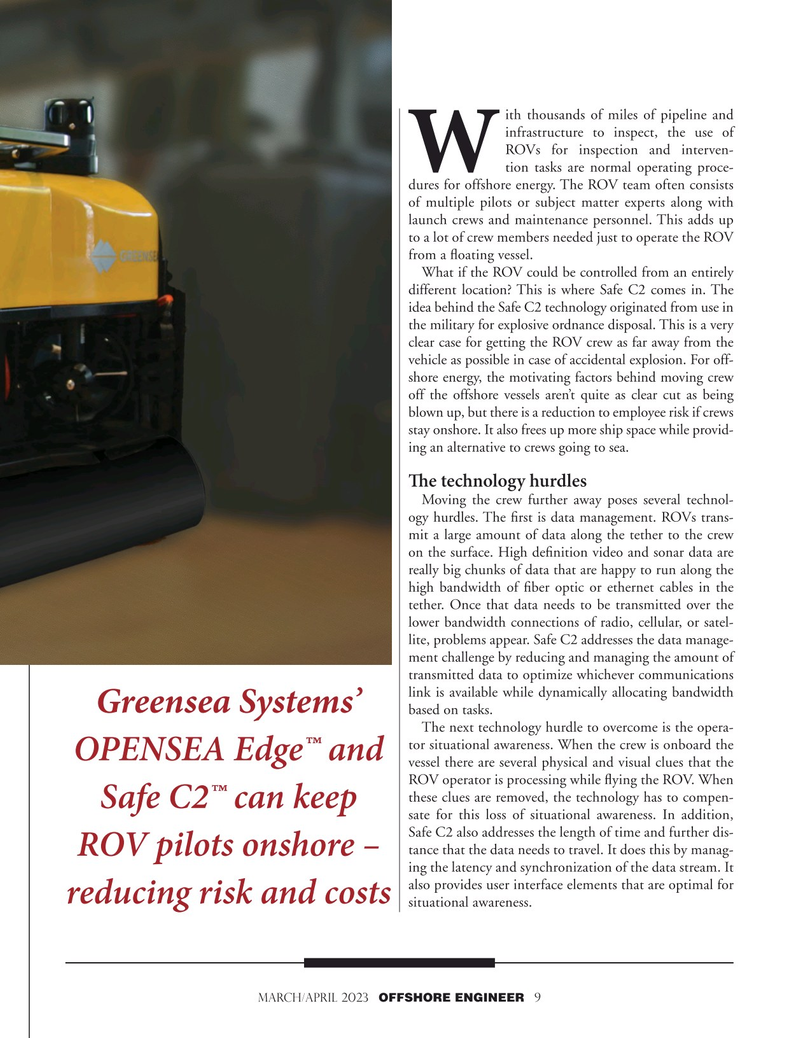
Page 9: of Offshore Engineer Magazine (Mar/Apr 2023)
Read this page in Pdf, Flash or Html5 edition of Mar/Apr 2023 Offshore Engineer Magazine
ith thousands of miles of pipeline and infrastructure to inspect, the use of
ROVs for inspection and interven-
W tion tasks are normal operating proce- dures for offshore energy. The ROV team often consists of multiple pilots or subject matter experts along with launch crews and maintenance personnel. This adds up to a lot of crew members needed just to operate the ROV from a foating vessel.
What if the ROV could be controlled from an entirely different location? This is where Safe C2 comes in. The idea behind the Safe C2 technology originated from use in the military for explosive ordnance disposal. This is a very clear case for getting the ROV crew as far away from the vehicle as possible in case of accidental explosion. For off- shore energy, the motivating factors behind moving crew off the offshore vessels aren’t quite as clear cut as being blown up, but there is a reduction to employee risk if crews stay onshore. It also frees up more ship space while provid- ing an alternative to crews going to sea.
Te technology hurdles
Moving the crew further away poses several technol- ogy hurdles. The frst is data management. ROVs trans- mit a large amount of data along the tether to the crew on the surface. High defnition video and sonar data are really big chunks of data that are happy to run along the high bandwidth of fber optic or ethernet cables in the tether. Once that data needs to be transmitted over the lower bandwidth connections of radio, cellular, or satel- lite, problems appear. Safe C2 addresses the data manage- ment challenge by reducing and managing the amount of transmitted data to optimize whichever communications link is available while dynamically allocating bandwidth
Greensea Systems’ based on tasks.
The next technology hurdle to overcome is the opera- tor situational awareness. When the crew is onboard the
OPENSEA Edge™ and vessel there are several physical and visual clues that the
ROV operator is processing while fying the ROV. When these clues are removed, the technology has to compen-
Safe C2™ can keep sate for this loss of situational awareness. In addition,
Safe C2 also addresses the length of time and further dis- tance that the data needs to travel. It does this by manag-
ROV pilots onshore – ing the latency and synchronization of the data stream. It also provides user interface elements that are optimal for reducing risk and costs situational awareness.
MARCH/APRIL 2023 OFFSHORE ENGINEER 9

 8
8

 10
10